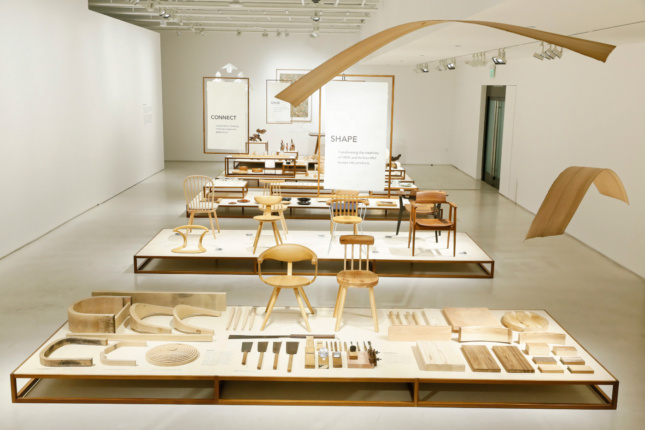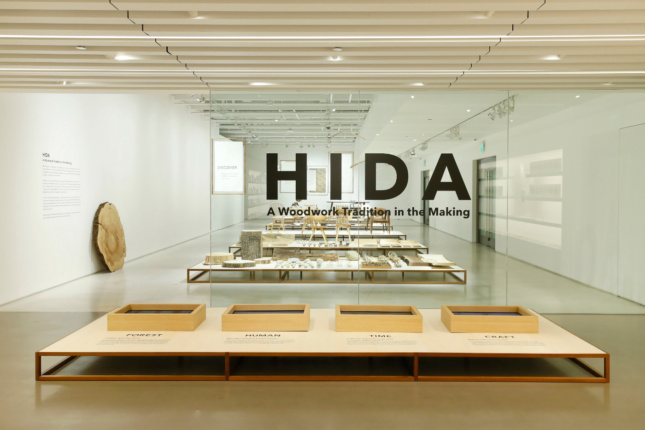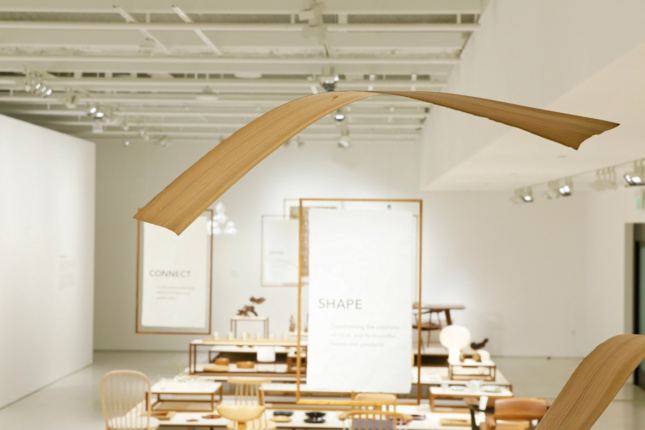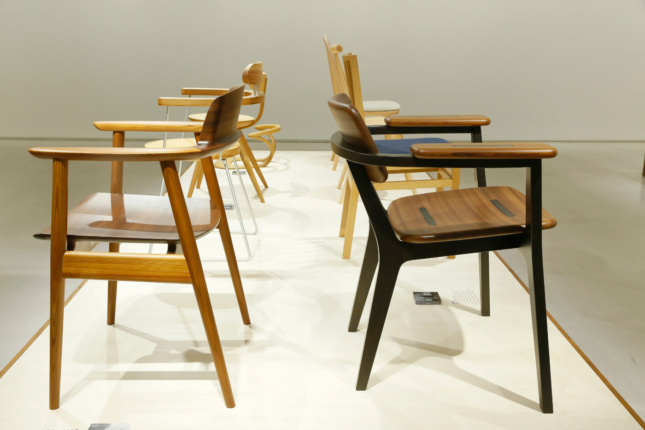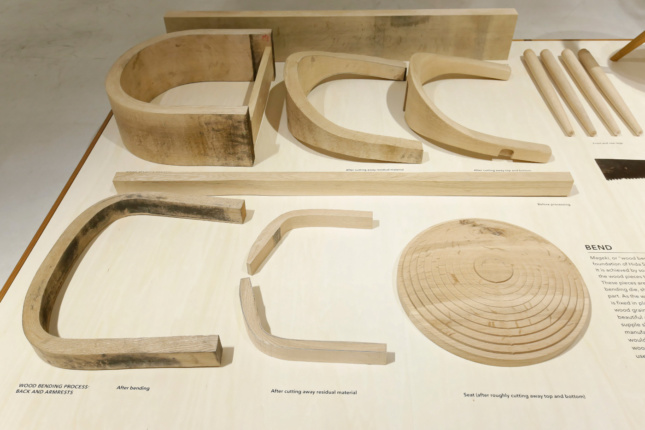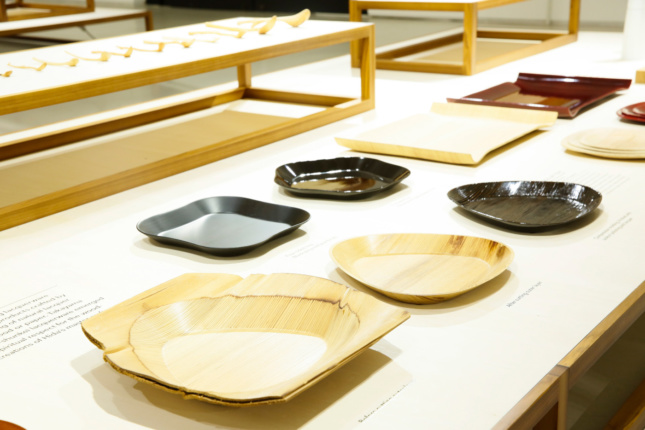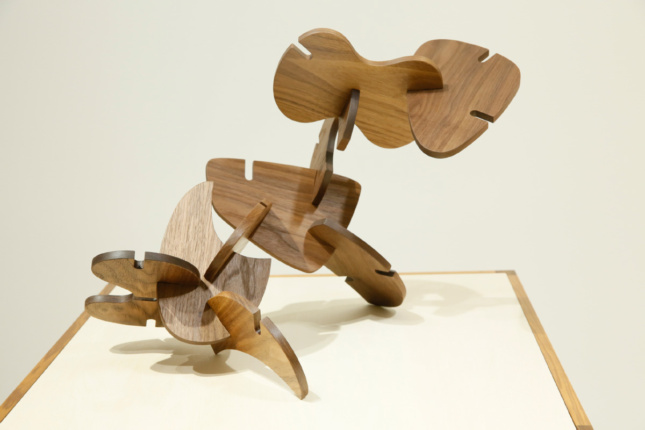A dense forest 300 miles wide spans the distance between the bustling Japanese cities of Tokyo and Kyoto. In the northern region of this divide lies Hida, a city in the Gifu Prefecture that has maintained a vibrant woodworking tradition for over 1,300 years (the first use of the term Hida no takuma, or “master craftsman of Hida,” first appeared in a written document in 467 AD). Wood bending machines introduced to the region from Germany and Austria between 1906 and 1909 led to the flourishing of the region’s industry; perhaps most notable among them is Hida Sangyo Co., Ltd., a furniture manufacturer established in 1920 whose work now adorns the Japanese imperial palace and regularly exhibits at the Milan Furniture Fair.
Japan House Los Angeles, one of three global exhibition spaces conceived by the Japanese Ministry of Foreign Affairs, is currently displaying Hida Sangyo Co.’s signature products with an in-depth look at what goes on behind the scenes. The show, Hida: A Woodwork Tradition in the Making, demonstrates the range of handcrafted products originated by Hida Sangyo a century after its founding, as well as the range of creative talent the company has called upon, including designers Kenya Hara, Enzo Mari, and even architect Kengo Kuma.
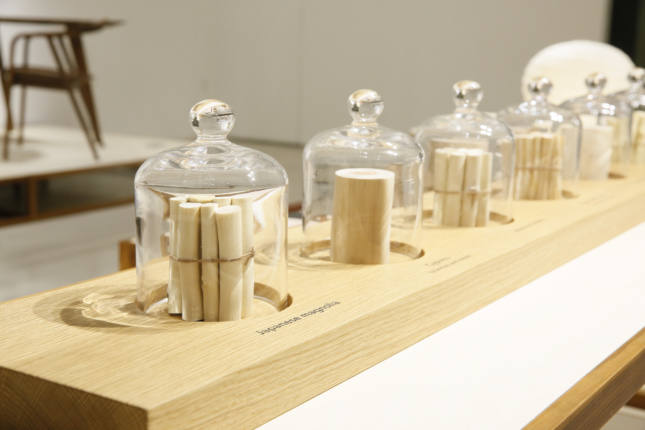
Exhibition designer Daigo Daikoku interspersed woodworking tools and untreated wood samples throughout to underscore the work’s deep connection to handicraft. A table demonstrating the company’s patented wood bending technology, for instance, reveals how an unremarkable block of wood is shaped into a finely-detailed chair back and set of armrest using only three steps. Another table features six glass domes containing wood samples—among them, cypress, Japanese magnolia, five-needle pine, and sansho pepper. Visitors are encouraged to lift the domes, “take a deep breath and experience the abundance of Hida’s beautiful forests through all five senses.” Nearly all six, I was convinced, could easily be distilled and sold as cologne for the rugged consumer market with little alteration.
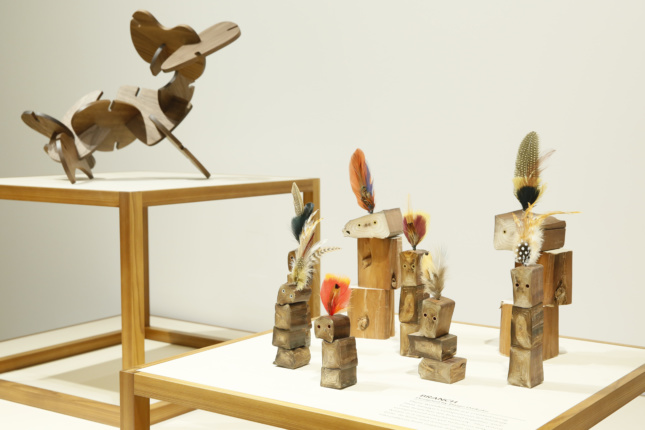
Along the back wall, Daikoku included a series of wooden toys of his own design. His stacked, compressed wood blocks and the interlocking boards both recall toy designs produced by Charles and Ray Eames, the mid-century duo that also found success in experimenting with wood and wood bending devices. “Please enjoy the charm of wood in tune with the soul and aesthetic of Japanese craft,” Daikoku implored the viewer, “and imagine you are walking through the forests of Hida.” The exhibition succeeds in showcasing the phenomenal tactile qualities of wood and its seemingly limitless potential as a resource for design.
Hida: A Woodwork Tradition in the Making will be on display until April 12.






